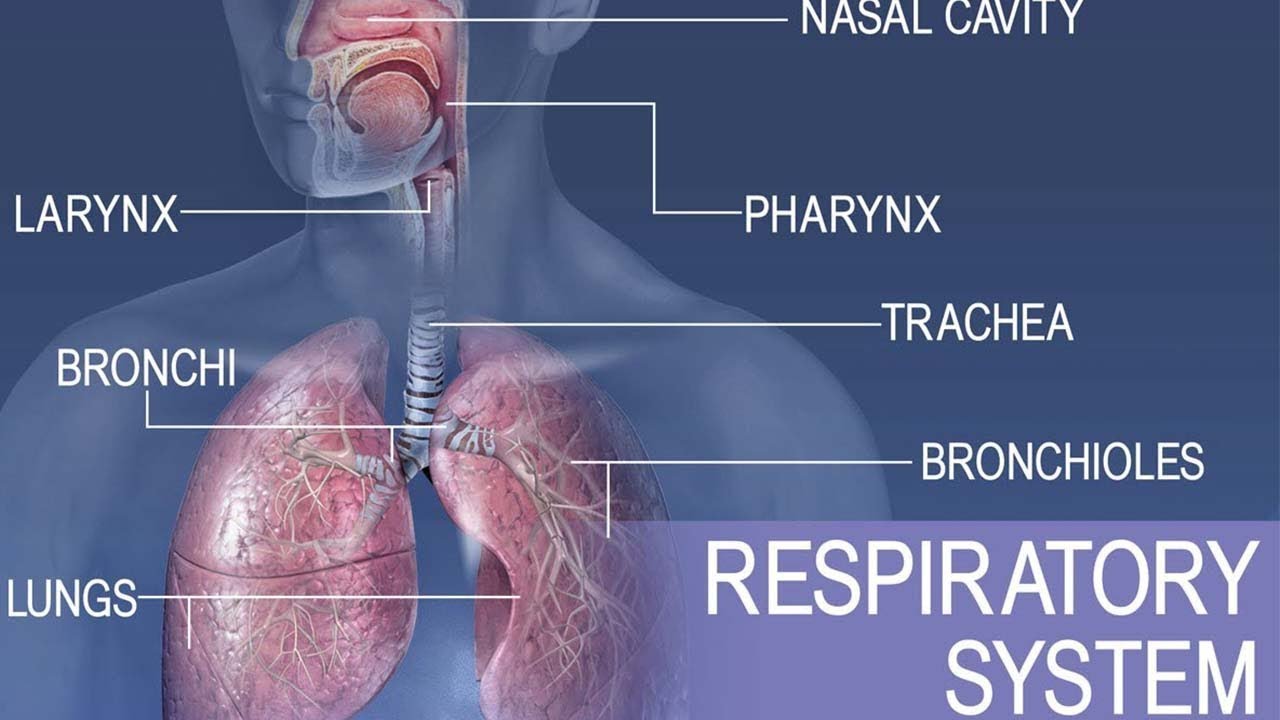THE RESPIRATORY SYSTEM 🫁 💨 👃🏼| Happy Learning
Summary
TLDRThis educational video script explains the vital process of breathing and the role of the respiratory system. It details the phases of inhalation and exhalation, emphasizing the importance of oxygen intake and carbon dioxide expulsion. The script describes the components of the respiratory system, including the nose, mouth, larynx, trachea, bronchi, and alveoli, and how they facilitate gas exchange. It also highlights the impact of pollution and tobacco smoke on lung health, advocating for a healthy lifestyle with exercise and avoiding smoking to maintain pink, functional lungs.
Takeaways
- 🌬️ Breathing is an involuntary process that we control without realizing it.
- 🔄 Breathing consists of two phases: inhalation (taking in oxygen) and exhalation (releasing carbon dioxide).
- 🫁 The respiratory system is composed of the lungs and airways, including the nose, mouth, pharynx, larynx, trachea, bronchi, and alveoli.
- 🗣️ The larynx contains vocal cords, which are essential for speech and singing.
- 🌀 Air enters the body through the nose and mouth, then passes through the pharynx and larynx into the trachea.
- 🔁 The trachea divides into two bronchi, which further branch into bronchioles leading to alveoli where gas exchange occurs.
- 🩸 Oxygen from the air passes into the blood through the alveoli, while carbon dioxide is expelled back through the respiratory system.
- 💪 Maintaining a healthy respiratory system involves regular exercise and avoiding air pollution and smoking.
- 🚭 Smoking and polluted air can damage the lungs, causing them to turn brown and impair their function.
- 🌿 To keep lungs healthy and functioning well, engage in physical activity and protect the environment by avoiding pollution.
Q & A
What is the primary function of the respiratory system?
-The primary function of the respiratory system is to facilitate breathing, which involves inhaling oxygen from the air and exhaling carbon dioxide.
What are the two main phases of breathing?
-The two main phases of breathing are inhalation, when air enters the lungs, and exhalation, when air is expelled from the lungs.
What is the role of oxygen in the respiratory process?
-Oxygen from the inhaled air is used by the body for various metabolic processes, and it is then transferred into the bloodstream through the alveoli.
How does the carbon dioxide we produce get expelled from our body?
-Carbon dioxide, a waste product, travels back through the respiratory system and is expelled from the body during exhalation.
What are the components of the airways in the respiratory system?
-The airways in the respiratory system include the nose, mouth, pharynx, larynx, trachea, bronchi, bronchioles, and alveoli.
What is the function of the larynx in the respiratory system?
-The larynx contains the vocal cords, which allow us to speak and sing. It also serves as a passage for air to enter the trachea.
How does the trachea contribute to the respiratory process?
-The trachea is a tube that divides into two bronchi, allowing air to pass into the lungs where gas exchange occurs.
What is the significance of the alveoli in the respiratory system?
-The alveoli are small sacs in the lungs where the actual gas exchange takes place. Oxygen passes into the blood, and carbon dioxide is expelled.
Why is it important to take care of our respiratory system?
-It is important to take care of our respiratory system to ensure efficient gas exchange and overall health. Pollution and smoking can damage the lungs, leading to respiratory issues.
What color are healthy lungs, and what happens when they are damaged?
-Healthy lungs are pink. When damaged by pollution or smoking, they turn brown and may stop functioning properly, causing fatigue and health issues.
What are some ways to maintain a healthy respiratory system?
-To maintain a healthy respiratory system, one should engage in regular physical exercise, avoid smoking, and minimize exposure to air pollution.
Outlines

Cette section est réservée aux utilisateurs payants. Améliorez votre compte pour accéder à cette section.
Améliorer maintenantMindmap

Cette section est réservée aux utilisateurs payants. Améliorez votre compte pour accéder à cette section.
Améliorer maintenantKeywords

Cette section est réservée aux utilisateurs payants. Améliorez votre compte pour accéder à cette section.
Améliorer maintenantHighlights

Cette section est réservée aux utilisateurs payants. Améliorez votre compte pour accéder à cette section.
Améliorer maintenantTranscripts

Cette section est réservée aux utilisateurs payants. Améliorez votre compte pour accéder à cette section.
Améliorer maintenant5.0 / 5 (0 votes)






